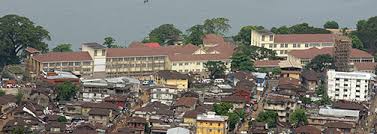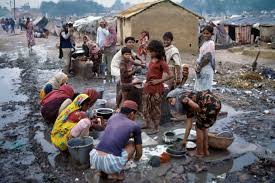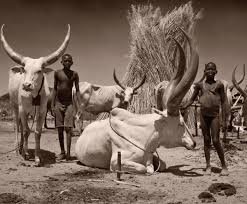THE CONCEPT OF UNDERDEVELOPED AND DEVELOPING SOCIETY
Hello guys,
This write-up is a continuation of the Introduction To The Series Of Entrepreneurship In A Developing Society In Other To Evaluate The Numerous Opportunities In Developing Countries.
You can read up previous posts here:
In other to effectively evaluate these opportunities, you must understand the concept of underdeveloped and developing society.
INTRODUCTION
Underdevelopment is a macroeconomic term used to describe underdeveloped economies and countries of the world. Underdevelopment usually suggests unused potential, that is, an economy that has not developed as it could, or an economy that has a long way to go in achieving full capacity.Note that an underdeveloped country is a country with good potential prospects for using more capital or more labour, or more available natural resources, or all of these to support it's present population to achieve a higher level of living standard.

It is important to note that underdevelopment is a relative concept. It makes sense only by comparison. In this case, I may consider an underdeveloped or developing economy as one whose levels of development - economic or social - is low, relative to that of advance economies like USA, UK, Germany and Japan.
ATTRIBUTES OF UNDERDEVELOPED AND DEVELOPING SOCIETIES
The attributes of underdeveloped and developing societies is the inability to provide for the basic needs of their populations and being unable to satisfactorily cater for the economic, social, and other basic needs of the population. The general nature of an underdeveloped/developing society may be gathered from the common economic characteristics of such a society. While it may be difficult to categorically states which country is underdeveloped, it will be much easier to bring out some fundamental attributes of underdeveloped/developing societies. These includes:
- Low levels of technology. The use of primitive technology in the production and conversion process is widespread in agriculture, manufacturing and processing.
 )

- Low levels of productivity. Developing countries have relatively low levels of labour productivity, that is, output per unit labour. This is mainly due to the absence or severe lack of complementary factor inputs such as physical capital and experienced management to raise labour productivity.

- A low average real income and a low growth rate of per capital income. Most of the other attributes of underdevelopment derive from this singular factor - low per capital income. For example, the Sub-Saharan Africa is credited with the lowest per capital income of $450. This means that the standard of living of the average Sub-Saharan African is low compared to her counterparts in other regions of the world whose per capital income is higher.
- A high consumption ratio or a low savings ratio. This is a fall-out of a low average real income. There is so much to spend the little income on, coupled with high price levels, such that very little or nothing of it is left for savings.

- Substantial dependence on agricultural produce and export of primary products. Over 75% of the population in Africa and 63% in Asia are dependent on agriculture compared to only 5.5% in North America. Agriculture contributes well over 20% of GDP for most developing countries compared to only 3% in developed countries. Primary products account for over 60% of all exports in developing countries and over 94% of total export earnings in Sub-Saharan Africa.

- High rate of population growth and dependent burdens. In 1990, the world's population was estimated at 5.3 billion, of which more than 3/4 lived in the less developed countries. Almost all the developing countries possess high population growth potential characterized by high birth rate and high but declining death rate. Death rates in developing countries have fallen, compared to the past, due to improved health conditions and control of major infectious diseases. An important consequence of high birth rate is that a larger proportion of the total population is in the younger age groups. This leads to a higher economic dependency burden on those that are employed. With many dependants to support, it becomes difficult for the workers to save and invest in productive assets.
- Low life expectancy. Developing countries also have a shorter life expectancy averaging 51 years as compared with 75 years for developed countries, implying that a smaller fraction of their population is available as an effective labour force.
- Inadequate health services (low numbers of doctors per 100,000). This factor principally accounts for the high rate of infant mortality in developing countries. The low level of income also means that the available health care facilities are not affordable to a majority of the people.
- High and rising level of unemployment and underemployment.
It is noteworthy that these attributes are not in anyway exhaustive. For example, underdeveloped countries are also characterized by a high illiteracy rate, inadequate supply of social amenities, and an unequal distribution of income.
One cannot be wrong to state that the above indices are evident in most African countries, and thus be classified as a 'developing' economy, which actually is a euphemism for 'underdeveloped' economy in the globe.

